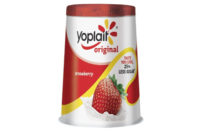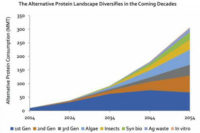TECH FLASH
Alternative sweeteners gain 12 percent share of market
Sucrose leads the alternative market at 78 percent, while high-fructose corn syrup accounts for 12 percent

With the rise of health-conscious consumers, alternative sweeteners have gained a 12 percent share of the $73.4 billion global sweetener market and 22 percent of its volume by sucrose equivalent (SE), according to independent advisory firm Lux Research.
In its analysis, “Just a Spoonful of Sugar: Sizing the Global Sweetener Market,” Lux Research found that within the alternative sweetener sector, sucrose leads with 78 percent, but high-fructose corn syrup (HFCS) accounts for 12 percent of the SE market, while high-intensity sweeteners (HIS) are third with an 8 percent share. Low-intensity sweeteners (LIS) and natural sweetener alternatives account for 1 percent each.
“Sucrose is the gold standard that all sweeteners aspire to, but growing health concerns and demand for naturally sourced sweeteners will lead to the rise of alternative sweetener combinations providing the full range of functionalities offered by sucrose,” says Camilla Stice, Lux Research analyst and the lead author of the report.
After studying the global sweetener market and evaluating opportunities for alternative sweeteners, Lux Research also found the Americas are at the top in terms of per capita consumption.
According to the researchers, South America is first with 68kg of SE per year, followed by North America at 49kg. However, the report says North America is far and away the leader in alternatives, with 18kg of SE consumed per capita each year, almost three times the global average.
Other findings show beverages lead alternatives use and are the single-largest end use for HFCS (70 percent), HIS (74 percent) and naturals (66 percent), while only 32 percent of sucrose goes into beverages.
Natural products are gaining a share of the market with the rising popularity of rare sugars, stevia, monk fruit and sweet proteins. Researchers say these products have the potential to gain market share from sucrose and other alternative sweeteners.
The full report can be found here: https://portal.luxresearchinc.com/research/report_excerpt/17986.
Looking for a reprint of this article?
From high-res PDFs to custom plaques, order your copy today!







